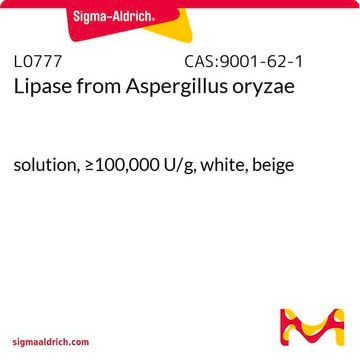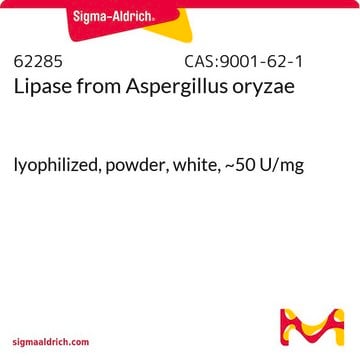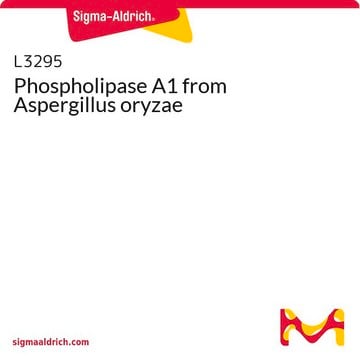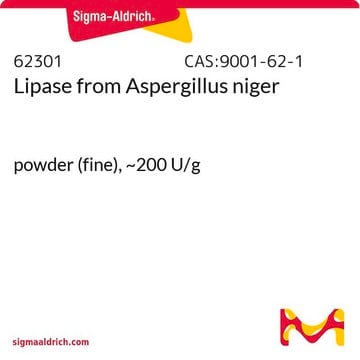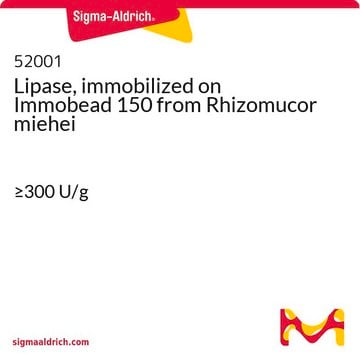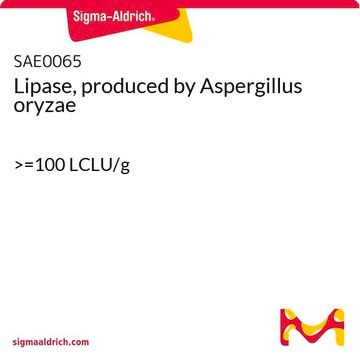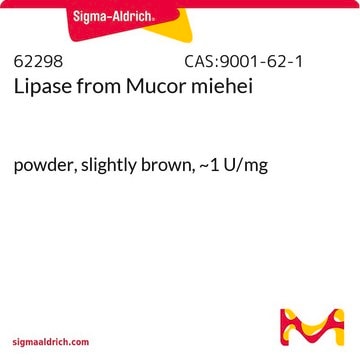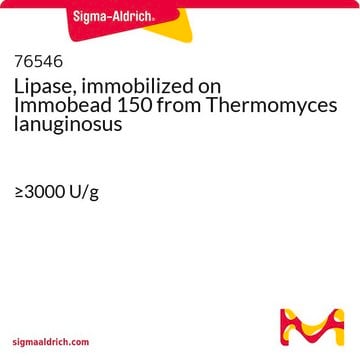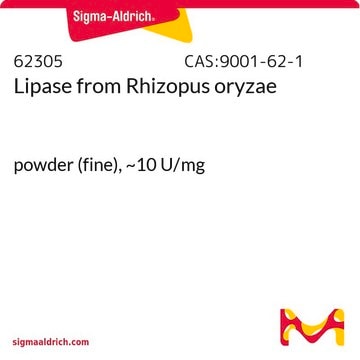L4277
Lipase from Aspergillus oryzae
≥20,000 U/g
Synonyme(s) :
Palatase® 20,000L
About This Item
Produits recommandés
Forme
lyophilized
Activité spécifique
≥20,000 U/g
Température de stockage
2-8°C
InChI
1S/C11H9N3O2.Na/c15-8-4-5-9(10(16)7-8)13-14-11-3-1-2-6-12-11;/h1-7,16H,(H,12,14);/q;+1/b13-9-;
Clé InChI
QWZUIMCIEOCSJF-CHHCPSLASA-N
Description générale
Application
- in the partial digestion of triacylglycerols (TAG)
- in the digestion of (12-ricinoleoylricinoleoyl)diricinoleoylglycerol (RRRR) present in castor oil
- in the hydrolysis of linseed oil
Actions biochimiques/physiologiques
Notes préparatoires
Informations légales
Mention d'avertissement
Danger
Mentions de danger
Conseils de prudence
Classification des risques
Resp. Sens. 1
Code de la classe de stockage
11 - Combustible Solids
Classe de danger pour l'eau (WGK)
WGK 1
Point d'éclair (°F)
Not applicable
Point d'éclair (°C)
Not applicable
Équipement de protection individuelle
Eyeshields, Gloves, type N95 (US)
Certificats d'analyse (COA)
Recherchez un Certificats d'analyse (COA) en saisissant le numéro de lot du produit. Les numéros de lot figurent sur l'étiquette du produit après les mots "Lot" ou "Batch".
Déjà en possession de ce produit ?
Retrouvez la documentation relative aux produits que vous avez récemment achetés dans la Bibliothèque de documents.
Les clients ont également consulté
Notre équipe de scientifiques dispose d'une expérience dans tous les secteurs de la recherche, notamment en sciences de la vie, science des matériaux, synthèse chimique, chromatographie, analyse et dans de nombreux autres domaines..
Contacter notre Service technique